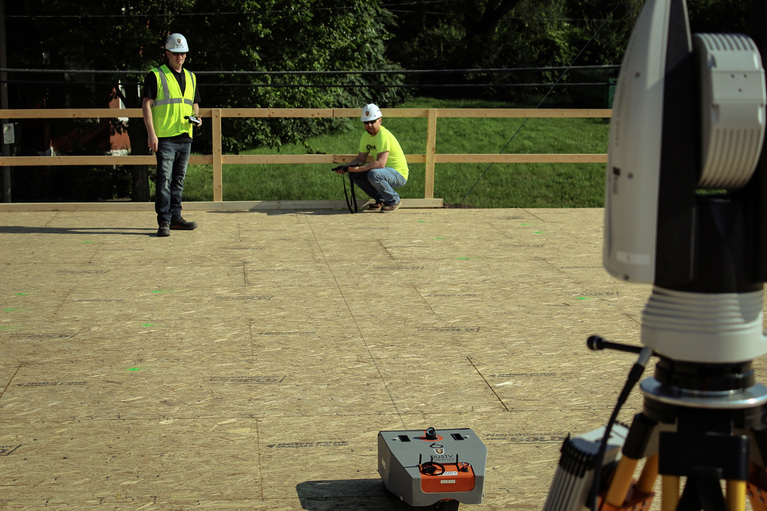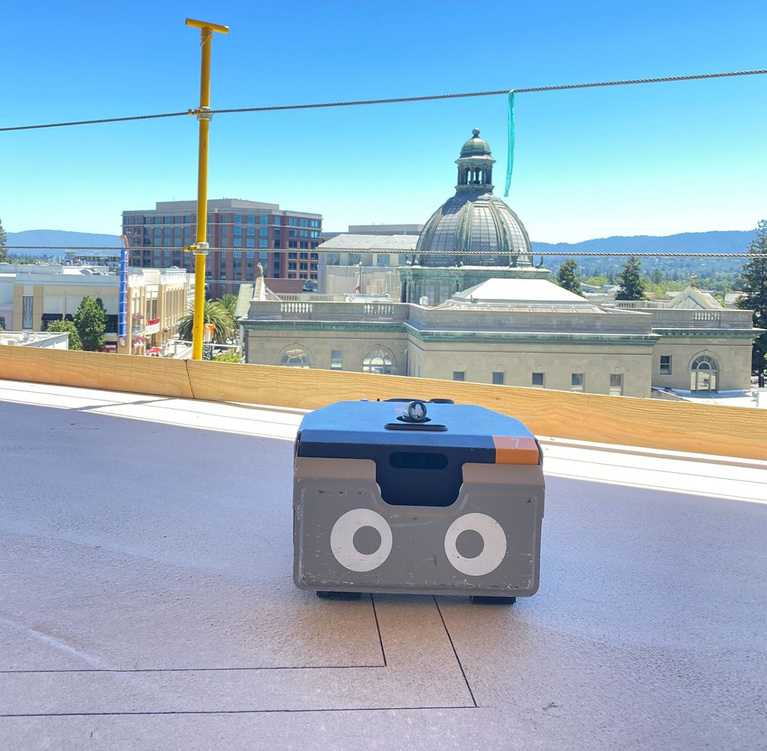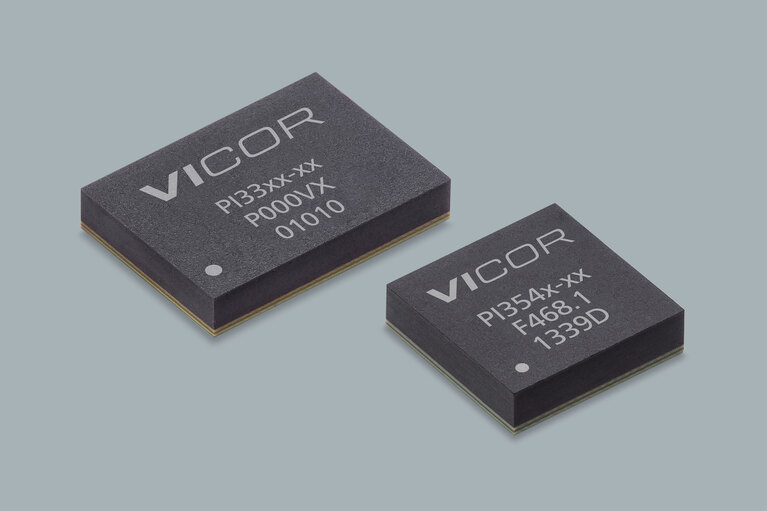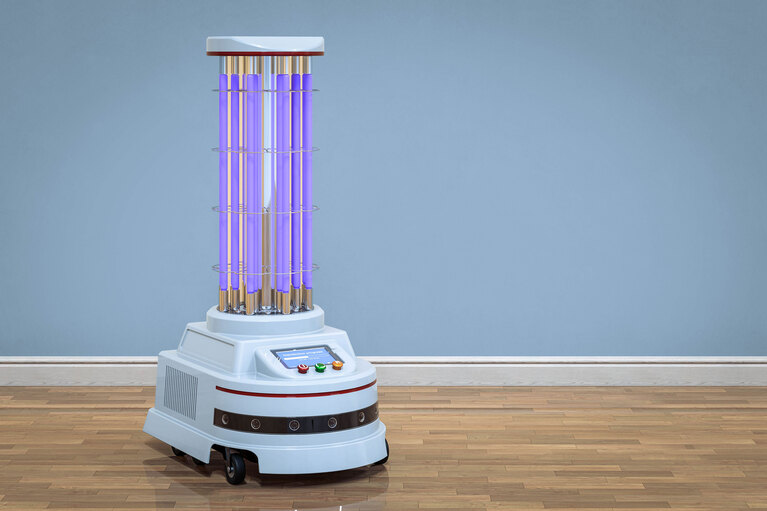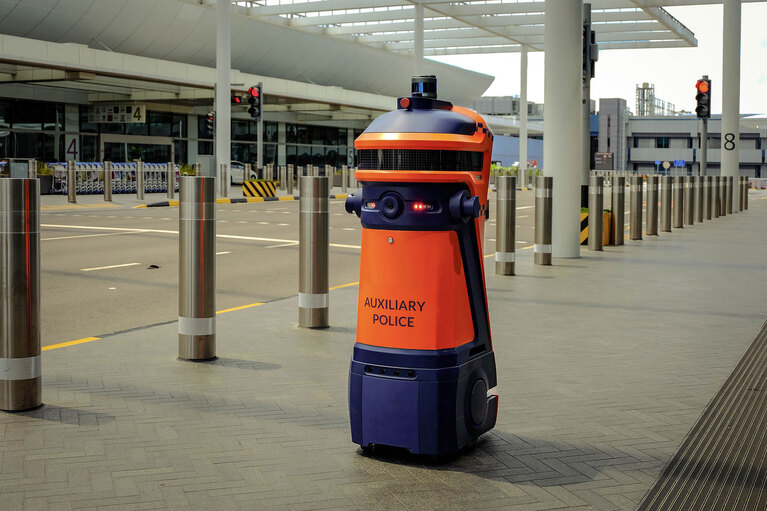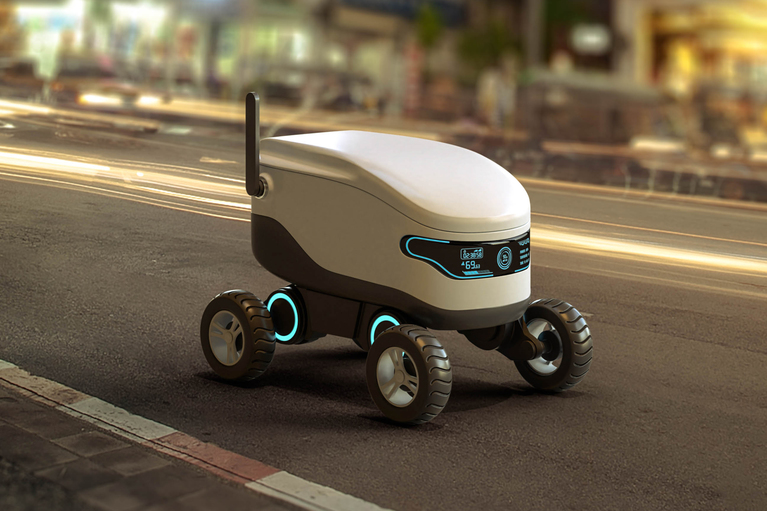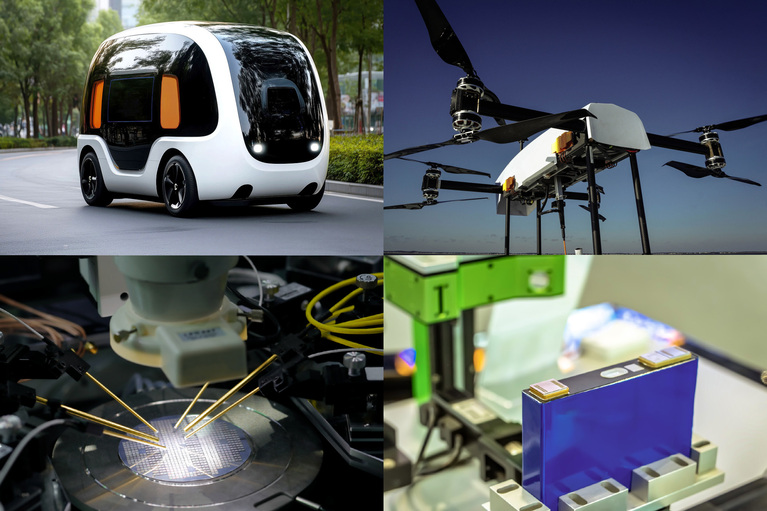
Accelerate your move to a high performance 48V power delivery network
This eBook provides guidance on designing 48V power delivery networks to enhance the performance, efficiency, and reliability of industrial products
Power converters have gained an increasingly important role in every electronic application and robotics is no different.
Power converters have gained an increasingly important role in every electronic application and robotics is no different. Today, most electronic devices integrate components that have different power requirements, both in terms of voltage and current level. This requires the introduction of power conversion stages capable of offering multiple output voltages with different power levels.
In the past, power converter stages were mainly built using ad-hoc solutions based on discrete components. Today, however, designers prefer to adopt integrated solutions which, with a single IC, perform all the tasks required by the power converter. An integrated solution provides higher reliability, better thermal management, and smaller size and weight than a solution based on discrete devices.
Robotics is an example where power dense power converters prove to be an indispensable component. Robots include multiple electronic components with different power supply requirements. These include motors (both BLDC and stepper types), servo motors, processing units (microcontrollers or microprocessors), sensors of various types (accelerometers, gyroscopes, pressure, temperature, humidity sensors and more), wireless interfaces for remote control and monitoring (Bluetooth, WiFi, etc.), as well as other sensors and actuators depending on the specific application. These power delivery networks can be very complicated.
Highly integrated programmable components, such as the most recent microprocessors, require very low supply voltages, while sensors and communication peripherals operate with higher voltages. Power requirements go up even more when it comes to powering electric motors. Therefore it is not that difficult to find robotics applications where 4, 5, or more different power rails are required.
In the case of small battery-powered robots, power converters capable of providing not only multiple power supplies, but also high efficiency and low power losses are required to extend battery autonomy as much as possible.
Innovations in the field of robotics follow one another at a rapid pace. This pace is calibrated by the progress made in the electronics sector and the availability of open-source software libraries capable of efficiently implementing complex algorithms, such as SLAM (Simultaneous Location and Mapping).
Among the companies that have contributed most to designing and bringing robots to the market for industrial, residential, and commercial applications, we must mention OLogic. Headquartered in Santa Clara, California, OLogic is an electronics consulting company with more than 18 years of experience assisting its customers in bringing robotics designs to market. Their broad robotics expertise allows them to offer support in the areas of electrical, mechanical, and industrial engineering, as well as software and firmware engineering.
“We create prototypes for our customers,” said Ted Larson, CEO for OLogic. “ We have a full team of people who can manage all aspects of robot design.” This involves knowledge of power electronics integration, a key design factor that affects the mobility, functionality, and battery life of mobile robots.
According to Larson, the robot industry often considers electronics as a kind of an afterthought. There are people thinking they can get away with buying all off-the-shelf hardware devices and then plug them together. That, however, might turn into a house of cards very quickly.
Mobile robots have special power requirements and demand a range of power levels. Different amounts of power and power density are needed by the sensors, servo motors, actuators, data servers, communications systems, and other components that run the robot. Some of these components are power hungry, while others might only operate periodically. This necessitates the capacity to deliver power from a battery-powered source rapidly, cleanly, and affordably.
Dusty Robotics (Dusty) is one client collaborating closely with OLogic to optimize the power profile of its robots. Based in Mountain View, California, Dusty creates robot-driven tools for the modern construction sector.
The Dusty FieldPrinter (Figure 1), a robotic tool that can transfer the drawings of a building directly on the job site flooring, helps reduce schedule time and rework costs through accurate, full-scale floor layout.
Phil Herget, Founder / CTO at Dusty Robotics, “When you design a building in a CAD model, everything is in digital format. Today, the current process is that people take that digital model, they print it out on paper, and then they bring it out into the construction site, where somebody manually translates all that on the ground.”
Dusty has built a tool, a robot, that can take those drawings and print them on the ground very accurately, turning a manual process into a digital process.
Figure 1: Dusty FieldPrinter is five times faster than a human and accurate to within one-sixteenth of an inch to spec (Source: Dusty Robotics).
This product is very precise, as it achieves an accuracy of 1/16” or smaller, corresponding to 1.5mm or less. According to Dusty, meeting that type of accuracy is very challenging and requires a great deal of sensor fusion on the robot. Also, the system acquires data both from external and internal sensors. All that information is then fused together to provide a very high precision on the localization, so the robot knows where it is and which way it’s facing at any given time.
Power management is a major technical challenge with this robot. Since it is a battery-powered system, it needs to provide as much battery life as possible. According to Dusty, there are many different power domains inside the robot, with many different voltages which need to be efficiently converted from the battery voltage. In addition to the sensors, there is also the entire printing mechanism which needs to be powered to requisite voltages. Lastly, since the robot must perform on job sites, it needs to be able to adapt to many different weather conditions mechanically and electronically.
OLogic has chosen the Vicor power converters for this mobile robot, more precisely the Vicor ZVS Buck and Buck/Boost regulator series.
As a Vicor Corporation partner, OLogic has followed a modular approach to building power delivery networks (PDNs) for robots. OLogic realized that they couldn’t create something with the same operational, thermal, and range efficiency as a Vicor power module. Vicor modules, like the ZVS Buck Regulator, also have a 97% efficiency rating and deliver 200 to 300 watts of power, making them very cost-effective.
According to OLogic, the required power converters need to be able to buck and boost depending on the state of charge of the battery, so that they can provide consistent power on the specific power rails, no matter what the state of charge is, and no matter what the other voltage rails in the device are doing.
Vicor’s ZVS Buck and Buck/Boost switching regulators (Figure 2) offer designers high power density and flexibility for high-efficiency point-of-load DC-DC regulation. By integrating a high-performance zero-voltage switching (ZVS) topology, they increase point-of-load performance and provide power efficiency up to 98%.
“The Vicor ZVS Bucks are becoming our preferred method of solving all kinds of power distribution problems because of the price and because they just work,” said Larson. Designing a robot is a very, very complicated thing. And power can be very tricky so we just use reliable Vicor power modules for almost all of our designs.”
Moreover, according to OLogic, ZVS power converters don’t exhibit any thermal issues. Due to their high-power conversion efficiency, they develop very little heating for a very high power conversion.
Figure 2: Vicor ZVS power converters.
OLogic can streamline the prototyping process and enable their customers’ get to market faster. Today the Dusty FieldPrinter is poised to revolutionize the construction industry in part because of OLogic’s support and ability to design power electronics systems.
This article was originally published by Power Elecronics News.
Accelerate your move to a high performance 48V power delivery network
This eBook provides guidance on designing 48V power delivery networks to enhance the performance, efficiency, and reliability of industrial products
Flexible, scalable modular solutions support multiple systems for healthier and cleaner spaces
Robots use UV lamps or disinfecting sprays to eliminate dangerous pathogens and bacteria from large areas such as schools, warehouses, hospitals, etc.
Compact power modules allow space for advanced sensors that improve security and performance
Inspection robots can monitor infrastructure more frequently and allow for rapid remediation before problems occur, saving lives, time, and money
Lightweight and efficient power modules extend delivery routes and save space to carry more goods
Last-mile consumer delivery of groceries, take-out food and online consumer items is the mission-critical task of autonomous robots
